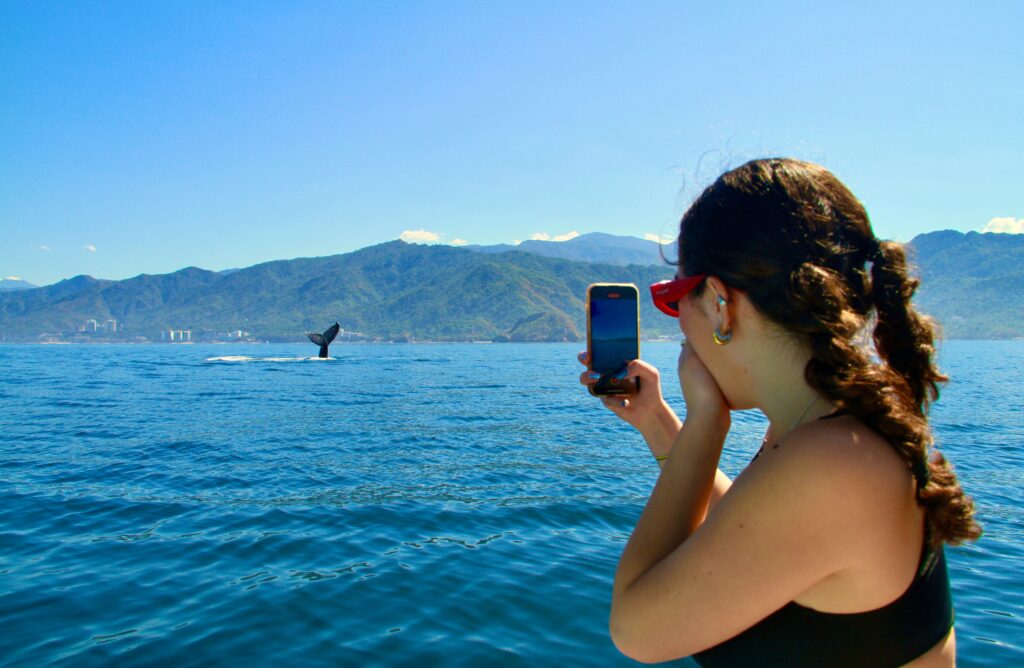Thinking about booking a whale watching tour in Puerto Vallarta? Here’s everything you need—season timing, what you’ll see, where boats depart, safety rules, what to pack, accessibility, prices, and the latest best practices—so you can plan with confidence and avoid tourist traps. ✈️🌴
Quick facts (Banderas Bay) 📌
- Main species: Humpback whales (Megaptera novaeangliae) migrate here each winter to breed and calve in the bay’s warm, protected waters.
- Typical season window: Early December to late March (exact start/finish announced each year by authorities). Last season (2024–25) ran roughly Dec 8–late Mar; expect similar dates for 2025–26.
- Peak months: January–February (most whales and surface activity).
- Common departures: Marina Vallarta (PV), Los Muertos Pier (Zona Romántica), Nuevo Vallarta, La Cruz de Huanacaxtle, Boca de Tomatlán, and Playa Mismaloya (home base for Mismaloya Xtreme).
When should I go? 🗓️
- Best overall: Mid-December through late February for reliable sightings and dramatic behavior (breaches, tail slaps, competition groups).
- Time of day: Early mornings usually mean calmer seas and the best light.
- Early season (late Nov–mid Dec): First arrivals; sightings build week by week.
- Late season (March): Calves are larger and playful; numbers taper later in the month.
Note: State authorities publish exact dates and may designate no-go nursery zones (e.g., around sensitive areas). Your operator should brief you on the current rules when you book.
What are the rules—and why do they matter? ⚖️
Mexico’s NOM-131-SEMARNAT-2010 protects whales and sets binding rules for boats and tours. The key points you should know:
- Max 4 boats near the same whale/group at once (others wait at a distance).
- Time limit: ≤ 30 minutes with the same whale/group.
- Approach & speed: Parallel, from the rear quarter; ≤ 9 km/h (~5 kn) in observation areas and ≤ 4 km/h (~2 kn)when with whales. No sudden speed/direction changes.
- Minimum distances (humpbacks):
- 60 m for small boats (<10 m)
- 80 m for medium/large boats (≥10 m)
- Waiting distance for all boats: 240 m
- (Blue/fin whales typically 100–120 m)
- Strictly prohibited: Swimming/snorkeling with whales, diving, getting between mother & calf, harassing/chasing, littering. If a whale approaches you, the boat remains neutral and lets it pass.
- Permits & flags: Legal operators carry a current SEMARNAT permit and display the official season flag/banderola—ask to see it before boarding.
These rules protect the animals and actually increase your chance of calm, natural encounters.
Where do tours leave from—and how long are they? 🚤
- Puerto Vallarta: Marina Vallarta & Los Muertos Pier (easy if you’re staying in town).
- Riviera Nayarit: Nuevo Vallarta & La Cruz (great for north-bay hotels).
- South shore: Boca de Tomatlán & Playa Mismaloya—smaller groups and scenic coastline; Mismaloya Xtremedeparts here with bilingual guides and certified captains.
- Typical durations: 3–4 hours (standard), with options for half-day or combo trips (e.g., whales + hidden beaches).
What will I see? 👀
- Adults: Breaches, tail lobs, pec slaps, competition groups (fast surface chases).
- Moms & calves: Nursing, “logging” (resting), gentle tail lifts—never approach or cut off mother-calf pairs (it’s illegal and unsafe).
- Other wildlife: Bottlenose/spotted dolphins, sea turtles, mobula rays, seabirds.
- Sound: Some boats carry hydrophones to listen to haunting humpback songs (with engines off).
How much does it cost? 💳
- Group tours: Best value (shared boat seat). Prices range from $70 to $120 USD.
- Private charters: Pay by boat/hour; ideal for families, photographers, or custom itineraries.
Prices vary by boat size, season demand, and what’s included (snacks, hydrophone, onboard photographer). Ask for inclusions and any rebooking policy up front. - Book with us here for $79 Dollars per person.
What should I bring? 🎒
- Light layer (breezy mornings Dec–Feb), hat/sunglasses with strap, reef-safe sunscreen, quick-dry clothing, towel, water, camera with strap/dry bag.
- Motion sickness: If you’re sensitive, take medication ~1 hour before departure.
- Drones: Many operators/policies restrict drones near wildlife; protected areas often prohibit them—ask first.
Accessibility & family tips 👨👩👧👦
- Boarding may be from docks or beaches; ask about ladders/handrails and mobility assistance.
- Young kids love it—choose morning and shorter trips for attention spans.
- Bathrooms: larger boats often have them; pangas typically don’t—confirm when booking.
Ethical & eco tips (help the whales) 💚
- Choose permitted operators and small groups.
- Never pressure your captain to “get closer.” The 60–80 m rule is the law; sometimes whales choose to approach—those moments are magic.
- Use reef-safe sunscreen and pack out trash.
FAQ ❓
Do tours guarantee sightings?
No one can guarantee wild animals, but in peak season Banderas Bay sightings are very likely. Some operators offer rebooking policies—ask when reserving. At Mismaloya Xtreme if you do not see the whale we reimburse you 100%
Is swimming with whales allowed?
No. Swimming/snorkeling/diving with whales is prohibited under NOM-131.
How close can boats get?
Minimum 60 m (small boats) or 80 m (medium/large); 240 m waiting distance; max 4 boats per group; ≤ 30 minutes per encounter.
What about speed and approach?
≤ 9 km/h in the area; ≤ 4 km/h when with whales; approach diagonally/parallel; neutral engine if whales are stationary; back off if behavior looks evasive.
Are there restricted areas?
Yes—authorities may close sensitive nursery zones (e.g., around offshore islands or designated coastal strips). Expect similar protections each season.
Which operator should I choose?
Pick a permitted local with certified captains, bilingual naturalist guides, safety briefings, and solid reviews. If you’re staying on the south shore, Mismaloya Xtreme runs small-group departures from Playa Mismaloya.
Planning checklist (2025–2026) ✅
- Pick dates inside early Dec–late Mar (aim for Jan–Feb for peak action).
- Choose a convenient departure (Marina Vallarta / Nuevo Vallarta / Mismaloya for small boats).
- Confirm the operator’s SEMARNAT permit & season flag.
- Ask about boat size, restroom, hydrophone, snacks, and rebooking policy.
- Pack smart; take seasickness meds if needed.
